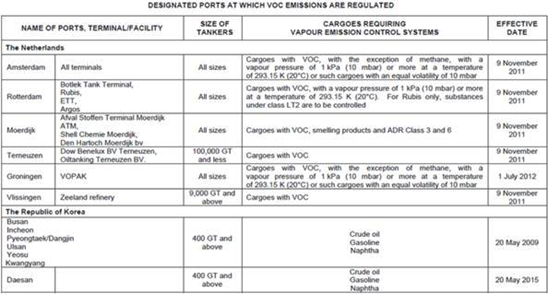Port Related VOC Management
Volatile Organic Compounds (VOCs) are the lighter parts of crude oil, or their products. They normally vaporize during the ship loading process in the loading tanks. This is then normally vented to the atmosphere causing air pollution in port areas.
IMO MARPOL Annex VI regulations allow the Flag state to designate ports that intend to control and reduce VOC from tankers. This is embodied in Annex VI Regulation 15 on VOC. The regulation enables ports and terminals to implement VOC controls.
For compliance purposes, these ports should be able to receive such gases and collect and safely dispose of them. Tankers that visit such ports should also have a Vapour Emissions Control System (VECS) to be compliant with IMO MSC/Circ. 585 on Standards for VECS system. Figure below shows a schematic of such a ship-board VECS. Further information on technical information on systems and operation to assist development of VOC management plans can be found in the relevant IMO MEPC Circular (MEPC.1/Circ.680, 27 July 2009).

Figure 46: Schematic of an oil tanker’s VOC emissions control system (MariEMS 2017).
Additionally, crude oil tankers are required to have an approved VOC manual. This should contain procedures for minimizing VOC emissions during loading, sea passage and discharge and additional VOC during washing. Currently, a number of ports have been assigned as VOC control ports; see the table below.

Table: Designated ports with VOC emissions control (MariEMS 2017).